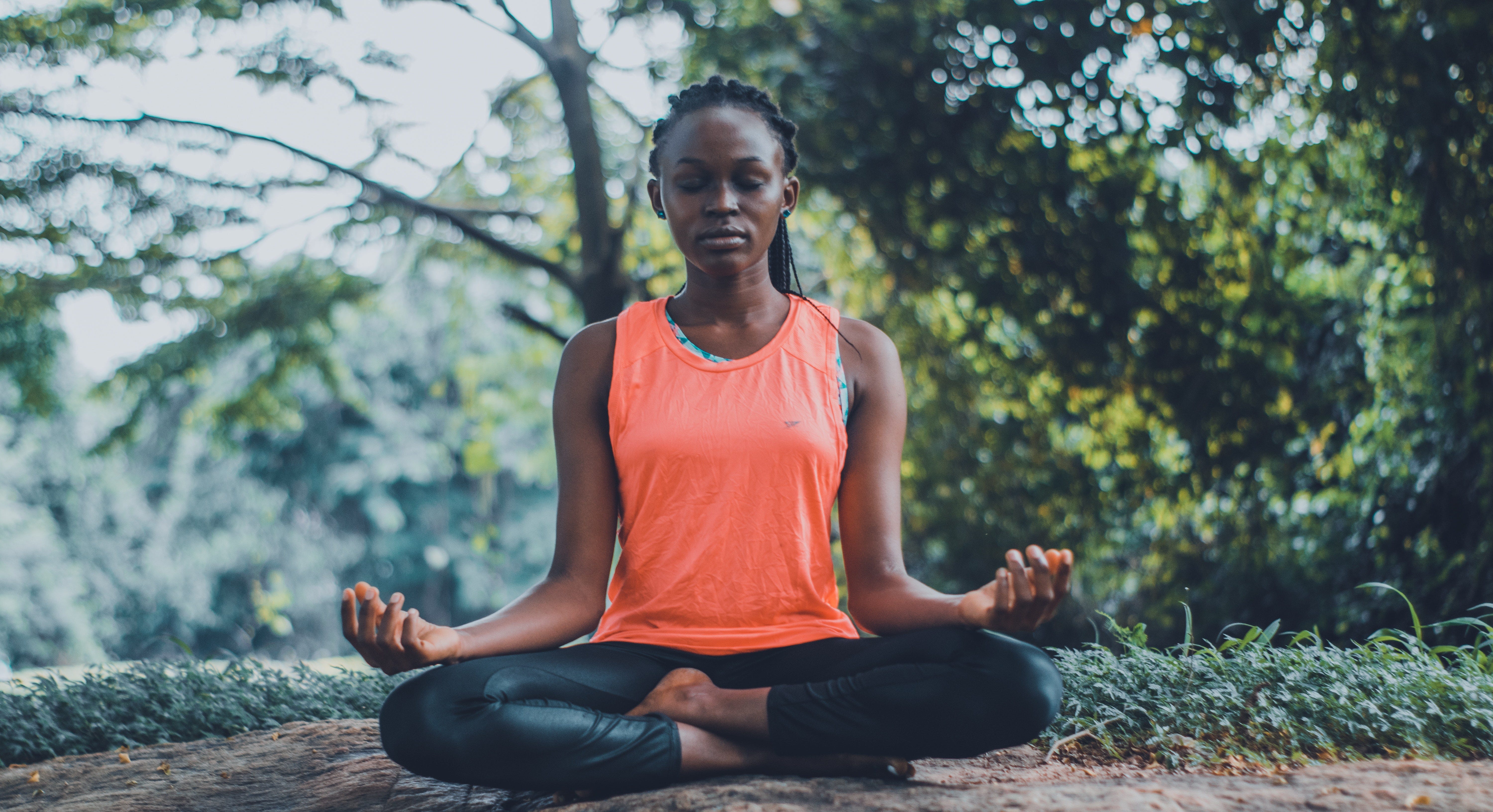How I Use 30-day Challenges For Personal Growth

Challenge Accepted!
Have you ever tried a 30-day challenge?
Maybe you wanted to improve some aspect of your health, adopt a new habit, or break a bad one.
Thanks for reading! Subscribe for free to receive new posts and support my work.
There’s something about this challenge format that makes it irresistible. Maybe it’s the simplicity or built-in deadline.
I’ve created several of my own challenges to try new things, adopt new habits, and conduct my growth experiments.
I do it for myself, not for social media or anyone else. Most of the time, I don’t even tell anyone that I’m doing a challenge.
I do it to find out what I can do, how far I can push myself, or how consistent I can be.
It’s a test of my ability to commit to the challenge until it’s complete. It’s a game against myself.
Sometimes I just want to find out if I can do something.
Other times, I’m trying to adopt new habits, learn new skills, or achieve fitness goals through specific exercises.
The important point is that I don’t do it for anyone but myself. I only compare my performance and results with myself - not to social media influencers, celebrities, gurus, or anyone else.
Why 30-Day Challenges Work
It’s easy to be skeptical of 30-day challenges when we see them posted on social media platforms. Many posts are trolling for attention, follows, or influencer deals. However, these types of challenges can be effective in helping us improve habits and achieve our goals.
One of the reasons 30-day challenges are so practical is a principle called commitment bias. This concept refers to our tendency to follow through with things we’ve made public.
To ensure we’re on the same page, I’m defining 30-day challenges as a commitment to participate in a specific activity for 30 consecutive days. The challenges can range from physical activities, like running or yoga, to personal development activities, like reading or writing.
Participating in these challenges can have a significant impact on our physical, mental, and emotional well-being.
30-day challenges provide a structured and focused way to develop new habits because the commitment to participate for an extended period helps to reinforce the desired behavior. We can build momentum by using the “don’t break the chain” productivity method often attributed to Jerry Seinfeld.
Starting new habits or getting rid of old ones can be tough - especially in the beginning. 30-day challenges are a great way to kickstart our journey.
Making It Stick
Sticking with a challenge can be difficult, especially if the activity is outside of your comfort zone. Some practical tips to help you succeed with your challenges are:
Choose a challenge that means something to you. Sometimes it’s fun to jump to large, public group challenges like NaNoWriMo (National Novel Writing Month), but they can be hard to stick with if they aren’t meaningful to you.
Choose attainable stretch goals. If the challenge is too difficult, you’re less likely to be consistent and finish the challenge.
Make a plan. Once you’ve decided on the challenge, adjust your schedule and environment to help you complete your goal. A cheat code for success is trying to make it easier to do the desired thing but harder to skip.
Set up an accountability system. Some people prefer to have accountability partners or a group of peers, while others prefer to be accountable to themselves. If you prefer to be accountable to yourself, you’ll need a solid system to monitor your progress.
I typically use daily journaling and a habit tracker app for my challenges. My favorite tracker is the Streaks app because it offers easy daily capture and visual progress monitoring.
Celebrate your wins. Noticing and celebrating your achievements, along with selecting meaningful challenges, can leverage the progress principle by creating positive feedback loops that fuel additional progress.
My 30-Day Experiments
I’ve learned a lot by creating and completing my 30-day challenges. They’ve also helped me adopt new habits and achieve goals.
You might be wondering how I choose my challenges.
No? Well, I’m going to tell you anyway.
I usually pick activities or habits I want to incorporate into my daily or weekly routines. Many of my challenges target physical health, but others focus on well-being or creative output. Some help me break through procrastination to make progress on a project - like decluttering stuff in my house during the 30-Day Minimalist Game.
Here are some things I’ve tested myself with over the last few years.
30-Day Minimalist Game
Why
I heard about the 30-Day Minimalist Game from Joshua Fields Millburn and Ryan Nicodemus on their podcast, The Minimalists. It was my first self-imposed 30-day challenge and it sounded easy. Our basement flooded and ruined many of our belongings so it was the perfect opportunity to declutter.
Purpose
To declutter my belongings over 30 days.
The Challenge
Get rid of one item on the first day of the month. Two items on the second. Three items on the third, and so on until Day 30.
How It Went
I didn't count items that the flood mitigation company removed because it felt like cheating.
The first two weeks were easy because I had a lot of old tech parts and other things I should’ve already tossed.
Week 3 was a bit more challenging because I had to discard 126 more items.
By the time Week 4 started, I’d removed 231 items from our basement, and it felt great. Each daily batch made the house lighter. I was ready to head to the finish line.
Fueled by the excitement of being three-quarters of the way toward completing the challenge, I did some quick math to figure out how many more items I needed to discard.
234!!
Over the previous three weeks, I’d removed 231 items. But now I had to find another 234 items to donate, sell, recycle, or trash.
It was tough, but I completed the challenge.
What I Learned
The two main things I learned during The 30-Day Minimalist Game were:
- I needed to set tighter selection criteria for things I keep in my life.
- It’s much easier to continuously declutter as we go than to attempt a massive one-time purge.
Interstitial Journaling
Why
I discovered the concept of **Interstitial Journaling** from a YouTube video by [Shu Omi]. At the time, I was experimenting with several networked note-taking apps like Roam Research, Obsidian, and Logseq. I also explored different note-taking methodologies, but this approach added date and time context to my ideas.
Purpose
To develop a consistent note-taking approach that aligned with my thought process.
The Challenge
Open a Daily Note in the note-taking app each morning. The Daily Note format had the date and “daily note” tag at the top followed by bullet points to log time-coded entries.
How it went
I set up my notes app to automatically create a Daily Note when I opened it each morning.
The journal entries included the current time using the 24-hour time format bolded numbers to make reviewing easier. I hit Enter, then tabbed in one time and logged my entry.
I repeated this process at different times during the day. The entries ranged from what I was working on to new ideas and anything I wanted to remember. Anything that required a long entry became a page with a separate page with a backlink in the daily note.
The new note-taking method stuck so well that I used it for more than 50 consecutive days before finally missing a day. WIN!
What I learned
The interstitial journaling challenge helped me develop a new note-taking habit that I still use today. It gave me a structure and methodology that aligns with how my brain works.
This new habit has helped me capture many things since completing the challenge. Plus, it gives additional context about the date, time, and other connected notes related to each entry.
My process has evolved a bit since the origin challenge. I still use interstitial journaling almost daily, but I give myself some grace when I miss a day. I don’t log every detail of the day, but I can capture things with the date, time, and any other context around that idea. The process also helps me connect related ideas using tags and backlinks.
100 Push-ups Per Day

Why
Push-ups have always been one of my favorite exercises. I’ve done at least 30 push-ups per day nearly every day since I started Army basic training 36 years ago. That’s a lot of push-ups.
I decided to try a 100 push-up per day challenge after talking with a friend about maintaining high activity levels as we got older.
Purpose
To increase my strength and muscular endurance while overcoming limiting beliefs about capacity.
The Challenge
Perform 100 push-ups per day for 30 consecutive days.
How it went
I completed two rounds of this challenge a few months apart. During the first round, I performed four sets of 25 push-ups in a single session every day. Things went well until the middle of the third week, when my left shoulder started hurting during the 4th set.
Although I have a background in physical therapy and knew better, I continued through the pain and finished my set. The symptoms subsided within 30 minutes, and I continued with my day.
This situation continued through the end of the challenge, but the pain started a little earlier as the last week progressed. The symptoms weren’t that intense and resolved quickly.
I completed the challenge by performing 3000 push-ups at 100 per day for 30 days.
During my second challenge, I changed the rules based on how my shoulder responded during the first round. This time, the only constraint was performing 100 push-ups daily in whatever mix of sets and repetitions needed based on how my shoulder felt.
I had minimal discomfort during the second session and was able to perform more than 3200 push-ups that month.
What I learned
The main lesson from this challenge was that even though I’m still 25 years old in my mind, my body will sometimes give me a reality check. I would never have advised a patient to push through the pain as I had done during my first round, but I pushed myself anyway.
The second round highlighted how much more output (nearly 7%) I achieved by listening to my body and adjusting my activity.
Boxing: 20-30 Minute Daily Heavy Bag Workout

Why
Boxing workouts have several [health benefits] like improved health, decreased stress, and improved balance. I had a heavy bag from my martial arts days and wanted to add variety to my workouts.
Purpose
To improve strength, muscular endurance, and coordination while decreasing stress.
The Challenge
Perform 20-30 minutes of heavy bag training daily for 30 days.
How it went
The first week of this challenge created new muscle soreness that I hadn't felt in a while. I was exhausted by the end of each training session.
As my body adapted, I progressed the program by adding more complex combinations with fewer breaks. I had a few episodes of shoulder soreness during the month, but they resolved quickly. By the end of the program, I noticed a significant improvement in my endurance, plus more muscle definition in my arms, shoulders, and abs.
What I learned
Much like the push-up challenge, I realized that I needed to adjust my workouts based on how I felt during the sessions. I got more comfortable decreasing the intensity when I was sore or fatigued, even when my plan called for a high-intensity workout.
10-Minute Meditation

Why
I tried meditation many times when I was younger but failed miserably each time. It wasn't until I found the Headspace app that I understood how to do mindfulness meditation. During my previous attempts, I thought the goal was to clear your mind of any thoughts, but I've never been able to do that.
Purpose
When I discovered the Headspace app, I was experiencing significant stress from losing my mother to breast cancer and exiting from my physical therapy practice. I'd just started a new job at The Johns Hopkins Hospital in inner-city Baltimore. My commute was at least 45 minutes each way with heavy traffic.
A trial of Headspace taught me about mindfulness meditation. I learned the goal was to notice and let go of your thoughts rather than try to remove them. After the initial 10-session trial, I signed up for the annual subscription to Headspace because I'd already noticed improvements.
The Challenge
Perform at least 10 minutes of mindfulness meditation daily for 30 days.
How it went
During the first week, I missed the session on Day 4 and decided to restart the challenge.
Note: It's okay to restart your challenges if you want.
The structure of the Headspace app made it easy to be consistent. Most of the programs had ten sessions. The app tracked my progress and leveraged a don't break the chain style visual tracker.
I could enter a mindful state whenever I felt stressed after a few weeks in the program. If I felt stressed during the day, I ducked into an empty conference room, sat down, closed my eyes, and focused on my breathing. It was like magic.
What I learned
The main things I learned from this challenge were:
1) How to do mindfulness meditation and that it doesn't require an empty mind.
2) Meditation not only helps at the moment, it has long-term cumulative benefits.
3) Calming my mind in moments of stress impacts how I react to situations.
Writing

Why
Writing has always been a part of my life. I wrote short stories and nonfiction essays in elementary and high school. Writing fiction appealed to my interest in stories and storytelling. The essays helped me think and share information.
During my deployment for Operation Desert Storm, I found a well-crafted hardcover notebook with sewn binding that became my journal. I wrote essays and poetry to document and process the events and experiences. That journaling practice had a profound effect on my thinking and ability to manage stress.
I started freelance writing several years ago. The content focused mainly on health, well-being, healthcare, and medical issues since I had a physical therapy background. I enjoyed freelancing, but my personal writing suffered. Although I wrote consistently for clients, I struggled to maintain a personal writing practice.
I’ve tried three different 30-day writing challenges, each with different parameters.
Purpose
To develop a consistent daily writing habit.
The Challenge
I’ve tried three writing challenges in the following order.
- Write 30 minutes per day for 30 days
- Write “Morning Pages” of 750 words per day for 30 days
- Write 500 words per day for 30 days
How it went
The 30-minute writing challenge was the most successful because it only required a timed writing attempt. I missed a few days during the 30-day cycle and had a few sessions that only produced a couple hundred words.
It was harder to maintain consistency during the word count challenges, but there were more sessions where I got into a flow state and produced nearly 2000 words. I noticed an interesting data point after completing all three writing challenges. Although my consistency was better with the daily timed sessions, my total writing output was better during the word count challenges.
What I learned
Each type of writing challenge has pros and cons. The timed challenges were easier to fit into my schedule, and I was more consistent. However, the set end time allowed me to procrastinate or let my mind wander. Either way, the session ended after 30 minutes, no matter how much or little I wrote.
The word count sessions were significantly more challenging at the beginning of each 30-day round. Getting started was hard, but I often found flow once I started writing.
The main problem with the word count-based challenges was fitting them into my schedule. I tried not to interrupt my writing flow once I started so some sessions lasted an hour or more.
Looking at my consistency and output after the three challenges, I realized that it is generally better to use word count goals even if the sessions are a little less frequent. It forced me to stay in the sessions until I wrote something. This method resulted in higher total writing output.
Final Thoughts
30-day challenges are an effective and accessible tool for personal growth. However, the goal should be to challenge yourself, not to impress others.
You can leverage commitment bias through accountability partners or go it alone. Pick the option that works for you.
To succeed in these challenges, follow practical tips: pick meaningful challenges, set achievable goals, create plans, establish accountability systems, and celebrate your progress.
30-day challenges help you adopt new habits and achieve goals. But they also teach valuable lessons about pushing your limits, staying adaptable, and committing to personal growth. They provide structure for reaching your goals, fostering positive habits, and pursuing personal growth, all while competing against your greatest rival: yourself.
Thanks for reading! Subscribe for free to receive new posts and support my work.




